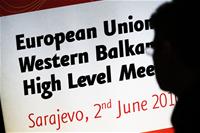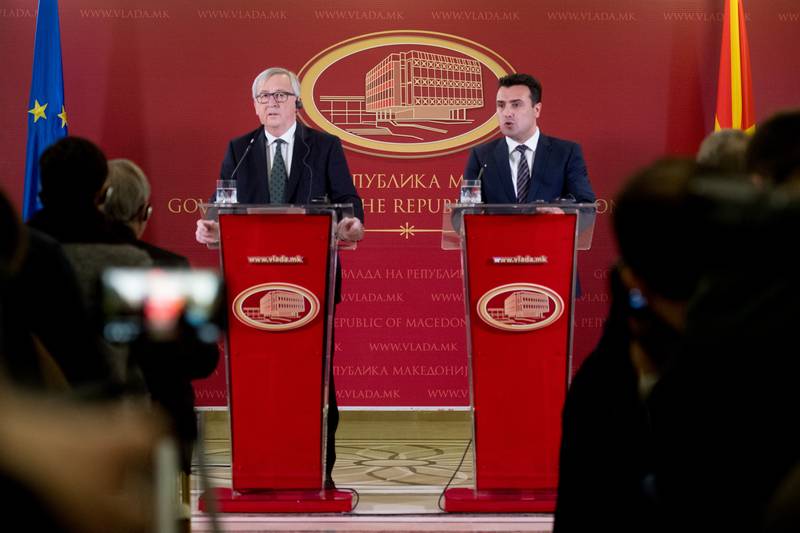A new division of Europe, according to the Financial Times
Adelina Marini, December 9, 2010
 Yet years before the crisis in the eurozone has erupted the EU was basically divided (then) by analysts into a North and a South, and later into strong economies and Southern Periphery. And even before that the Union was divided into new and old member states officially by ... the US. However now, with the constantly inflaming crisis in the euro area, the Financial Times made another division, the scales of which are yet to be studied and analysed. Furthermore, this new division is practically a segmentation of the "new member states".
Yet years before the crisis in the eurozone has erupted the EU was basically divided (then) by analysts into a North and a South, and later into strong economies and Southern Periphery. And even before that the Union was divided into new and old member states officially by ... the US. However now, with the constantly inflaming crisis in the euro area, the Financial Times made another division, the scales of which are yet to be studied and analysed. Furthermore, this new division is practically a segmentation of the "new member states".
Central and Eastern Europe (CEE) vs. South-East Europe (SEE)
"But Bulgaria - a new member state shaped by centuries under Turkish rule - belongs indisputably to SEE". It is this sentence that impressed me very much while reading the special report of the Financial Times from December 7, entitled Doing Business in South-East Europe. According to the newspaper on average South-East Europe has continued to lag behind the European Union in the recovery. And because of the heterogeneity of the region the common analysis is difficult, this is why the specialists make the division Central and Eastern Europe and South-East Europe.
The newspaper quotes Christian Keller, chief economist for European emerging markets at Barclays Capital who says that "South-eastern Europe is heterogeneous. On average, it benefits somewhat less [than Central Europe] from German growth". Greece, one of the main sources of investment for regional banks and industries, is the only EU member state headed for consecutive negative growth this year and next year, according to EU forecasts, quoted by the Financial Times. Romania and Bulgaria, after steep crashes, will barely return to positive growth in 2011.
By the way, this conclusion is especially interesting against the backdrop of the growing discontent from German economic growth. It is a fact, however, that the existence of a strong economic partner is contagious for its neighbours. And when there is no such strong partner, everyone is doing by itself the way he can.
Another interesting element of the analysis and the division is the conclusion that the national currencies with fixed exchange rate are in general recovering more slowly than the rest. For example the newspaper gives Romania and Serbia who had to ask for help the International Monetary Fund but now they are recovering faster than Bulgaria and Croatia who have fixed exchange rates.
It is not only the economy
In fact, the analysis of the British financial daily and the experts it asked goes beyond economic indicators. Moreover, this analysis reaches the substance of the divergences of the economies of the countries from SEE. But first, what do investors see, whom Bulgaria is so impatiently waiting for to drag it out from the not very good situation? "For fund managers, south-eastern Europe, or "SEE" implies lower economic development and higher risk than central and eastern Europe, or "CEE". The historic frontier between Austrian and Turkish domains remains a tangible factor today".
"Cultural distinctions influence business practices, with less formality to the south and east", the newspaper writes and quotes Dejan Tufegdzic, a Belgrade-based mergers and acquisitions adviser: "To do business in Serbia, you need not just knowledge, but to adapt to local customs, which are no so business-oriented. The main problem is selective implementation of rules".
To comprehend the obvious
After all the conclusions in the Financial Times's special report are obvious for everyone who preferred to travel by car throughout Europe. Investors, being too busy, use airplanes and as euinside has written many times, this does not give a clear perspective of the development of a country. And watching the dry data and numbers, as it became clear from the global financial and economic crisis, is more likely to allure than to give a clear idea of economic development.
Cultural distinctions are also clearly visible on both routes from SEE to Western Europe - from Sofia via Serbia, Croatia, Slovenia and from Sofia via Serbia, Hungary. And when Samuel Huntington wrote about the clashes of civilizations he meant precisely this, no matter the other short term politically lucrative conclusions. But now, when not just the eurozone but the entire EU is facing the dilemma - to be or not to be - a sober analysis is extremely needed in order a viable solution to be found that could lead to sustainable policies.
Therefore it will not be a bad idea Bulgaria to stop boasting being an EU member state and to point out this as a panacea. By default the EU is a Union of similar values and ideals not just a gathering of wanting-to-be-there countries. And this analysis of the Financial Times should painfully show that in the worst case scenario (break up of the EU) where Bulgaria would stand.
 Bakir Izetbegovic, Andrej Plenkovic | © Council of the EU
Bakir Izetbegovic, Andrej Plenkovic | © Council of the EU Aleksandar Vucic, Recep Tayyip Erdogan | © Serbian Presidency
Aleksandar Vucic, Recep Tayyip Erdogan | © Serbian Presidency Jean-Claude Juncker, Zoran Zaev | © European Commission
Jean-Claude Juncker, Zoran Zaev | © European Commission